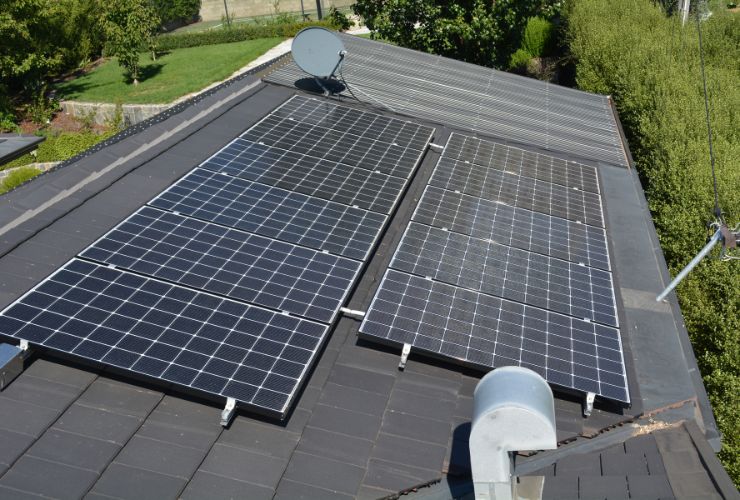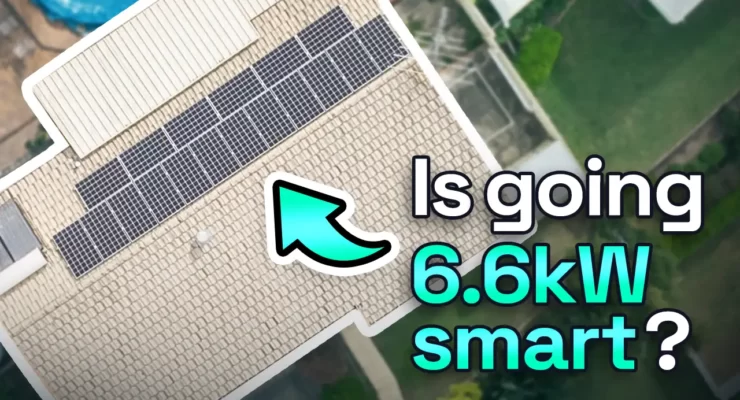Fast read
When considering a 6.6 kW solar power system, several factors need to be evaluated to ensure it meets your needs effectively. Start by assessing your daily electricity usage to determine if the system can produce enough power to cover your electricity consumption.
Additionally, weigh the initial costs against potential savings and incentives, like rebates and feed-in tariffs, to make a financially sound decision. Keep future considerations in mind, such as the possibility of adding battery storage or charging electric vehicles with solar power.
Evaluate your roof space and orientation to ensure it can accommodate the necessary panels, accounting for shading and structural factors. Remember that a 6.6 kW system may not always be the best choice.
Make sure to decide based on your energy needs and individual situation. Consider your energy needs before choosing a 6.6 kW system.
Take into account your individual situation when deciding on a 6.6 kW system. Seeking guidance from solar energy experts can help tailor the system to your unique needs.
One size does not always fit all. What to consider before going for a 6.6kW solar system?
Installing a solar power system is a significant financial commitment, and choosing the right system size for your individual requirements is crucial. While a 6.6kW solar power system is a popular choice for many families, various aspects must be considered before making a final selection. This post will review the important factors that can help you decide whether a 6.6kW solar system best fits your energy needs.
The average size of installed solar systems has increased over the years. In 2008, the average system size was 1kW, but by 2023, the average system size had grown to over 8kW.
People are learning more about solar energy. They are comparing the benefits and costs.
This makes them more likely to invest in advanced solar systems. This trend is expected to continue in the future. This trend is expected to persist in the future.
How much kWh of electricity do you use daily?
The average Australian household uses 18 to 20kWh per day. However, homes with growing families and higher electricity needs may use more than this.
A benchmark to start from is that producing at least as much power as you consume daily would be ideal. You can use some of this power during the day on-site, but you’ll need a battery to use it all. This can help you save money by shifting your energy use from night to day.
You should evaluate your household’s energy demand before purchasing a 6.6kW solar power system. Begin by reviewing your electricity bills to determine your average daily energy consumption in kilowatt-hours. A 6.6kW solar system can produce between 25 and 30 kWh daily, depending on location, panel efficiency, and weather conditions. If your average daily use exceeds this range, you may investigate a larger system to best satisfy your energy needs.

How much are you willing to spend?
Consider the initial expenditures, including the purchase and installation fees, and compare them to the potential savings over the system’s lifetime. Investigate possible incentives, such as government rebates, tax credits, or feed-in tariffs, which can have a significant impact on the system’s overall financial soundness. In addition, consider your payback period duration and return on investment (ROI) to see if a 6.6kW solar system fits within your budget and financial objectives.
Think about the future
Consider the option for battery installation and charging shortly. At the same time, you may not be looking to add a battery now. Installing enough solar capacity now to charge the battery you will likely install soon is wise.
Electric cars are increasingly popular and will be many people’s next purchase. Consider the potential and need to charge your electric car from your solar panels rather than buying from your energy company. Worth considering increasing the size of your solar system to cover this.
It would also be more cost-effective to install the extra capacity in one go rather than paying the total installation costs for a system expansion down the track. The typical recommendation is to go bigger than what you think you need. In many circumstances, maximise the capacity you can install on your roof.
Roof space
The size of a solar power system is crucial in choosing the best system. Examine the available roof space and orientation to determine whether it can support the required solar panels for a 6.6kW solar system installation.
Consider elements such as adjacent trees or buildings providing shade, impediments such as chimneys or vents, and your roof’s overall condition and structural integrity. Suppose your roof space is restricted or unsuitable for solar panel installation. In that case, you may need to choose a smaller system or investigate alternate mounting alternatives, such as ground-mounted systems.

Why a 6.6kW solar system isn’t always the solution
Choosing the right size solar power system is crucial for optimizing energy production and financial benefits. Before deciding on a 6.6kW solar system, there are several key factors to consider to ensure it’s the best fit for your unique situation.
Firstly, it’s essential to evaluate your energy consumption patterns. Review your energy bills to understand your monthly and annual energy usage. This data provides a baseline to determine the appropriate system size that can offset a significant portion or even all of your energy needs.
Secondly, consider the available roof space on your property. The size and orientation of your roof play a pivotal role in determining the solar panel capacity you can install. Ideally, you’ll want a roof with ample space and a suitable angle to capture maximum sunlight throughout the day. Consulting with a solar energy expert can help assess your roof’s potential and design a system that maximizes solar exposure.
Economic considerations are also vital when choosing a solar power system. While solar energy systems offer long-term savings, the initial costs can vary based on the system size and components. Evaluate your budget and explore financing options, incentives, and solar rebates available in your area to make an informed financial decision.
Lastly, anticipate your future energy needs. If you expect your energy consumption to increase due to lifestyle changes or expanding your property, it may be wise to invest in a slightly larger system now to accommodate future growth.



